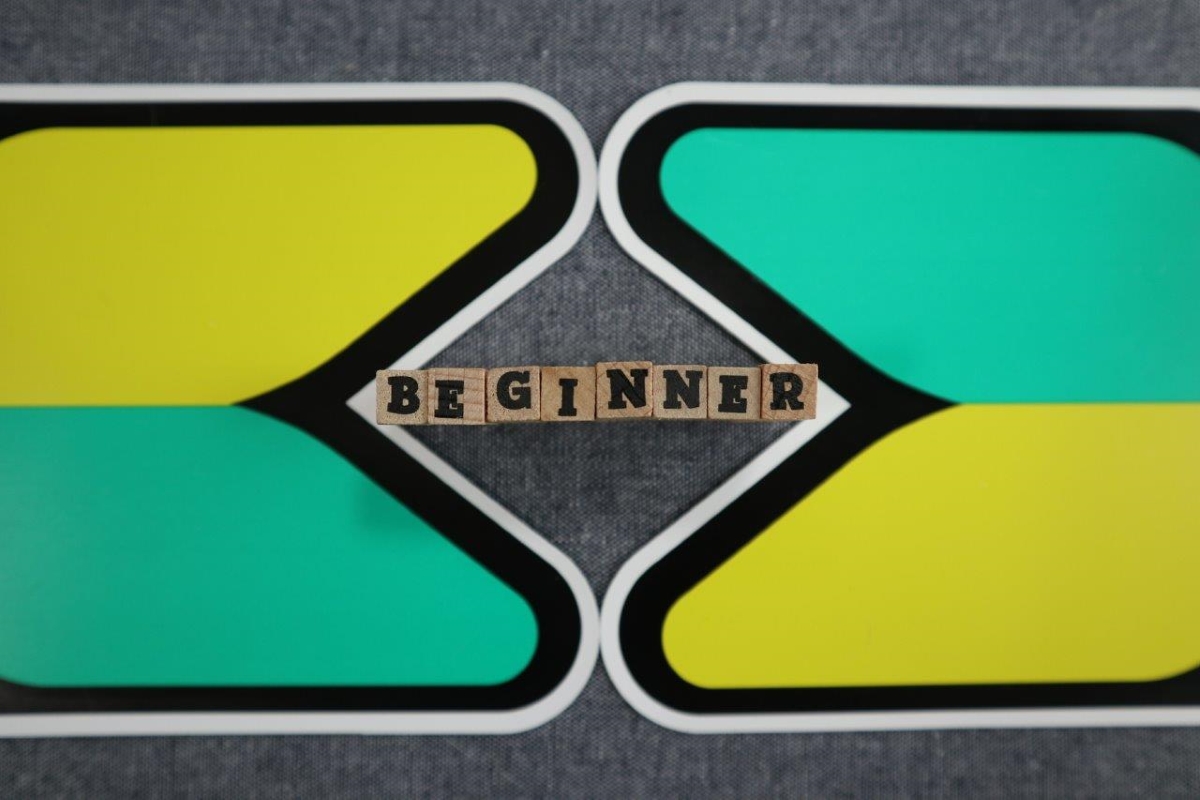Any Advice for Absolute Beginners?
January 27, 2022
I have two pieces of advice for you.
(1) Learn the minimum amount of knowledge needed for language learning.
(2) Learn strategically.

The most important thing for a busy businessperson when learning Japanese is to clarify their own goals and create a study plan based on those goals. It is not effective to buy a textbook for beginners that you find on Amazon without any clear reason or rationale, or to take lessons from a Japanese person who has no Japanese teaching skills just because you know him/her. It is most likely a waste of money and time.
It takes longer to learn Japanese than it does to climb the world’s highest mountain. However, while most people make a plan for climbing a mountain, few people make a plan for learning Japanese. I believe this is the reason why so many people give up on learning Japanese.
(1) Learn the minimum amount of knowledge needed for language learning.
Information that is convenient or favorable to you is not necessarily correct. I was once involved in a level check test for a blogger who claimed that everyone could learn Japanese in three months. One of our experienced instructors who is also a certified ACTFL-OPI tester interviewed the person and determined that his level was second from the bottom out of ten. He could say a few phrases, but could hardly answer the instructor’s questions. It didn’t seem to matter to him whether or not everyone could really learn Japanese language in three months. His real aim was to increase the page views of his blog, generate affiliate income, and sell merchandise.
I think it would be great if we could master a language in three months. However, in reality, it takes much more time than that, as explained in another page.
(2) Learn strategically.
There is a saying in the Art of War by Sun Tzu, “If you know your enemy and know yourself, in a hundred battles you will never be defeated”. This would also apply to learning Japanese.
First, understand the characteristics of the language and the key points for learning Japanese. Then, after accurately understanding the resources you can invest, set a goal that is highly feasible. Then, create a study plan that suits your needs. If you do all these things, you will increase your chances of mastering Japanese.
I hope that my information will become similar to an art of war for Japanese learners
*For more details on the points of creating a study plan, please refer to another article.
What’s the point of taking the time to study Japanese when you can just use automatic translation?
January 26, 2022
The answer to this question is influenced by the speed and accuracy of technological innovation, but more than that, I think it is a question of how you think about communication. So here are my thoughts on the subject.

I believe that communication has two kinds of purposes. One is to accomplish a task, and the other is to build a relationship. The former includes reports and requests, for which automatic translation may be sufficient. Especially in text-based communication such as chat and email, automatic translation is becoming more and more accurate. But, for the latter, it is better to be able to understand the other person’s culture and their thoughts. And for that reason, learning their language is so beneficial and useful. This is why language is said to be such an important part of culture.
Therefore, for those who want to build a better relationship with Japanese people, I believe it is worthwhile to study Japanese, no matter how accurate the automatic translation becomes.
How many hours does it take to master Japanese?
January 26, 2022
How many hours it will take varies from person to person. Specifically, the following factors affect it. Your ability to learn the language, how you learn it, the tools and training available to you, how different it is from your native language, etc.

It is difficult to say for sure because these factors have a complex impact. However, the following two pieces of information may be helpful.
(1) 900 hours to pass the highest level of the JLPT
The most famous Japanese language test is the JLPT. The administration of the JLPT changed slightly in 2010, but until then, the official website stated that “the time required to pass the highest level is about 900 hours.
The new official website doesn’t have any information about the study time required to pass the exam, but the difficulty level of the highest level is designed to be the same in the old and new administration, so 900 hours is still a good estimate even in the new administration.
*JLPT does not measure writing or speaking ability.
https://www.jlpt.jp/faq/
https://www.jlpt.jp/about/pdf/comparison01.pdf
(2) FSI think it takes 2,200 hours to reach native level.
According to the Language Learning Difficulty for English Speakers compiled by the Foreign Service Institute (FSI) of the U.S., Japanese is ranked as the most difficult language for English speakers, along with Arabic, Chinese (Cantonese, Mandarin), and Korean, and requires 2,200 hours to become proficient in daily and professional communication.
https://www.state.gov/foreign-language-training/
In another article, I wrote that it is surprisingly easy to reach the intermediate level, but it still takes time to master.
Is Japanese difficult to learn?
January 26, 2022
People think that learning Japanese is difficult, but if you are aiming for a daily communication level, it is actually not that difficult. I will explain the reasons for this, along with the linguistic characteristics of Japanese.

The following are the main reasons why Japanese is considered to be difficult.
-There are three types of written characters: Hiragana, Katakana, and Kanji.
-There is honorific language(Keigo*).
(*Note: These are expressions used to indicate respect for others such as when speaking with a person older than oneself or a person who has achieved a great accomplishment.)
-There are many words related to numbers and counting objects.
-The basic particles and order of words can change in a conversation.
-Verbs must be conjugated in order to use them correctly.
Conversely, Japanese also has the following characteristics.
-There are only 5 vowel sounds.
-There are no articles.
-There is no distinction between singular and plural nouns.
-Verbs do not inflect based on person.
-There is no distinction in syntax between male and female gender, or between people and objects.
It is hard to reach an advanced level in any language. However, if your immediate goal is “to be able to converse with phrases or sentences rather than individual words ” or “to be able to read and write”, then Japanese is a language that is easy to learn. Even if your goal is “to be able to understand about 60% of daily conversation among Japanese people,” it is not so difficult compared to other languages.
In other words, Japanese is surprisingly easy!
Japanese-learning-method-for-business-people-Vol00-about-this-blog
January 26, 2022
This blog aims to help busy businesspeople learn Japanese efficiently, and will explain strategic methods to learn Japanese.

Business people have a different environment for using and learning Japanese than students. Therefore, Koike Kei, the founder CEO of the world’s first online Japanese language school, will comment on the questions that many Japanese language learners have, based on cost performance, time management, and other perspectives, in addition to second language acquisition theory. If you know this information, your success rate of learning Japanese will increase dramatically.

Shirasaki-sensei, the head of our writing course, has published a book titled ”
「10の基本ルールで学ぶ 外国人のためのビジネス文書の書き方」
10 Basic Rules for Writing Business Documents for Foreigners.
Our Response to the Gender Free Policy
January 25, 2021
In accordance with gender-free policy, we have decided to remove gender information from the course participant information and will not collect it in the future.
In relation to this matter, we will use “They” as the third person singular, rather than He or She, in the English title on the completion report.
We will take the same measures for hiring lecturers in the future as well.
It is said that the productivity of Japanese companies is lower than that of non-Japanese companies. In fact, the companies and organizations I’ve worked for have had wasteful or inefficient operations. Three of the most commonly cited wasteful things are
(1) Meetings
(2) HANKO Culture
(3) Face to face sales
So, in this newsletter, let’s examine whether or not these will be changed by the coronavirus.
(1) Meetings
The main characteristics of a useless meeting are
“I have to attend a meeting that has nothing to do with my work.”
“It ends with just a sharing of information.”
“We got together to talk about it, but it didn’t come to a decision.”
But these are separate issues from working remotely, so even if the meeting held online, it won’t change much if the purpose of the meeting and the way to work doesn’t change.
(2) HANKO Culture
Not a few people say they want to work remotely, but have to come to the office to stamp documents. “The HANKO Culture is a major cause of the difficulty of working remotely,” some said. In June, the Japanese government announced that “a seal on a contract is not necessarily required. (FYI, it wasn’t originally required by Japanese law to put a seal on the contract, but the government announced it because many people misunderstood.)
Now there’s a greater awareness that other means of authentication, such as electronic authentication, are acceptable. So while many people think the HANKO Culture will change, I expect it to be about halfway there. The reason for this is that there are system costs associated with implementing alternative methods such as electronic authentication. However, 99.7% of Japanese companies are small and medium-sized enterprises (SMEs), and many of them cannot afford to invest in systems, so they continue to do things the way they used to. First, large companies that can afford it will be the first to adopt e-authentication. Second, it will be popular in companies that do business with such large companies. So I think it will take some time.
(3) Face to face sales
At the company I used to work for, we had a tradition of visiting clients at the end of the year to present them with calendars made by our company. I knew that it was useless to give them a calendar because it wouldn’t affect our work, and that we could just mail it instead of visiting, but I followed the previous custom.
But nowadays, most companies refrain from meeting with outsiders as much as possible. This is a good excuse to stop wasting time on face-to-face sales if the client side is willing to STOP. And since older people, who used to be reluctant to do online meetings, are now using ZOOM and the like, there will be less face-to-face sales and more business meetings over the phone and online.
These are my predictions. What do you think??
Forty-four people died on July 4, 2020 due to the heavy rains that fell mainly in the Kyushu region. The damage is especially severe in Kumamoto Prefecture. Fourteen people died at a nursing home in Kuma Village.
Recently, it is not uncommon to see the heaviest rainfall in recorded history, probably due to extreme weather conditions. In addition, there are rivers all over Japan, so there is a risk of flooding all over the country. Japan is about to enter the typhoon season, so this is a good time to take precautions to prevent flooding in your area. It is strongly recommended that you check your flood risk.
The risk of flooding can be checked on the hazard maps operated by Japan’s Ministry of Land, Infrastructure, Transport and Tourism.
This site will provide you with information on “flood risk,” “landslide risk,” and “tsunami risk” for your area. Just open the map and hover over your area to see how much of the above risk you are at.
And the accuracy of this hazard map is said to be extremely high.
Flooding in Nagano Prefecture, caused by a large typhoon in October 2019, has also been shown to have a high flood risk. And the floods that occurred in Kumamoto this time were also shown as dangerous on the hazard map.
The red point on the Google map on the left is where the nursing home where 14 people died is located. And the image on the right is a hazard map showing the flood risk at the same location. The area where the nursing home is located is pink, indicating the possibility of 10-20 meters of flooding.
And this image also shows a Google map on the left and a hazard map on the right. You can see that there are many places near Tokyo that are at high risk of flooding.
(The blue point on the right is the location of the flooding in Ibaraki Prefecture in 2015, which was also marked as high risk.).
We urge you to check out the hazard map to save yourself and your family’s lives.
With an indirect method, the learner receives explanations using an intermediate language (such as his or her native language) so that he or she can understand.
With a direct method, the learner receives explanations in Japanese only.
If your native language is English, you may worry about whether it’s better to temporarily get explanations in English or to get explanations in Japanese. In this article, I will explain the pros and cons of both methods.
Indirect Method – Pros
-Explanations are definitely easier to understand.
-Learners can understand in a short amount of time.
Indirect Method – Cons
– It’s easy for learners to develop a habit of always thinking in their native language.
-It’s hard for learners to develop a habit of reasoning based on the Japanese they know.
-There may be many instances of not understanding when having an actual conversation in Japanese.
Direct Method – Pros
-Learners will develop a habit of reasoning based on words they do know even if there are words they do not understand.
-Lessons can be taken in a form that closely resembles an actual conversation in Japanese.
Direct Method – Cons
– Learners will sometimes misunderstand.
-It may take a while before the learner can understand.
The indirect method is less stressful because beginners cannot understand explanations in Japanese. However, the advantage of studying using the direct method from the beginning is that learners are better prepared for a real conversation because they have been listening to actual conversations in Japanese only. In other words, the difference is whether you consider speaking only in Japanese as “stressful” or “good training.”
I recommend the following approach for people who want to become used to Japanese as quickly as possible, but who also want to use their lesson time efficiently.
・First, tell your instructor ahead of time not to use an intermediate language unless you request otherwise, and basically use Japanese only.
・Then, ask your instructor for explanations in an intermediate language only when you can’t understand no matter how hard you try.
However, make an agreement with your instructor not to use an intermediate language more than three times per lesson.
(It doesn’t matter if you agree to five times or ten times, it’s just seems best to use an intermediate language as little as possible.)
・Then, do not use an intermediate language more than the agreed number of times no matter how frustrating it becomes.
I recommend this approach because, by sticking to these rules, you will develop a habit of thinking for yourself as much as possible even when you don’t understand and you can enjoy your lessons like a game.
Categories
Recent Posts
- I cannot keep up with meetings conducted in Japanese. Are there any good ways to study?
- Are there any good writing materials for business Japanese? (Three keys to developing business Japanese writing skills.)
- Are there any free materials available for studying business Japanese reading?
- Should I read newspapers for reading practice in business Japanese?
- Are there any good business magazines to practice reading business Japanese?
Archives
- August 2022
- June 2022
- May 2022
- April 2022
- March 2022
- February 2022
- January 2022
- October 2021
- January 2021
- August 2020
- July 2020
- June 2020
- May 2020
- April 2020
- March 2020
- February 2020
- January 2020
- December 2019
- November 2019
- October 2019
- September 2019
- August 2019
- July 2019
- June 2019
- May 2019
- April 2019
- March 2019
- February 2019
- January 2019
- December 2018
- November 2018
- October 2018
- September 2018
- August 2018
- July 2018
- June 2018
- May 2018
- April 2018
- March 2018
- February 2018
- January 2018
- November 2017
- October 2017
- July 2017
